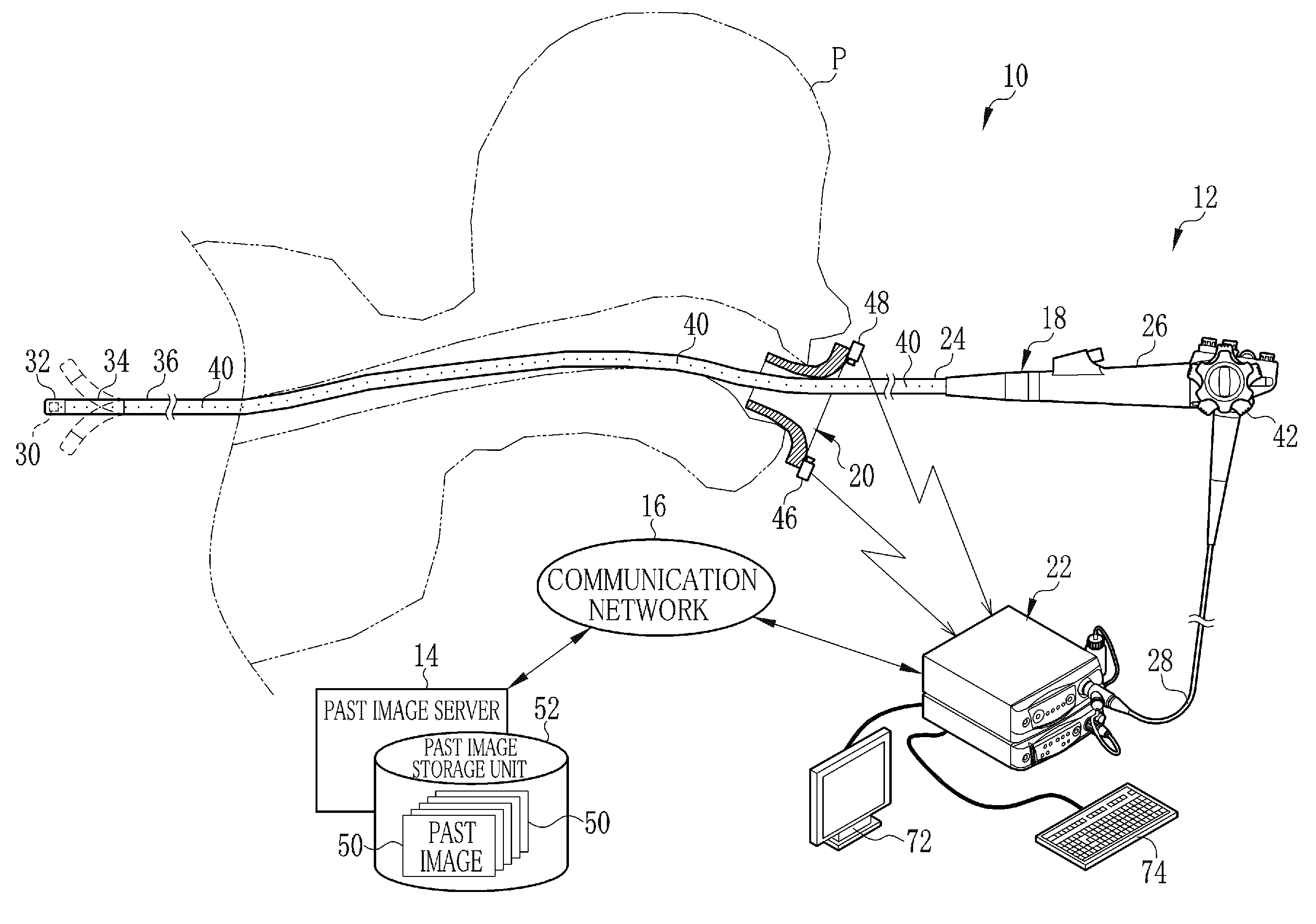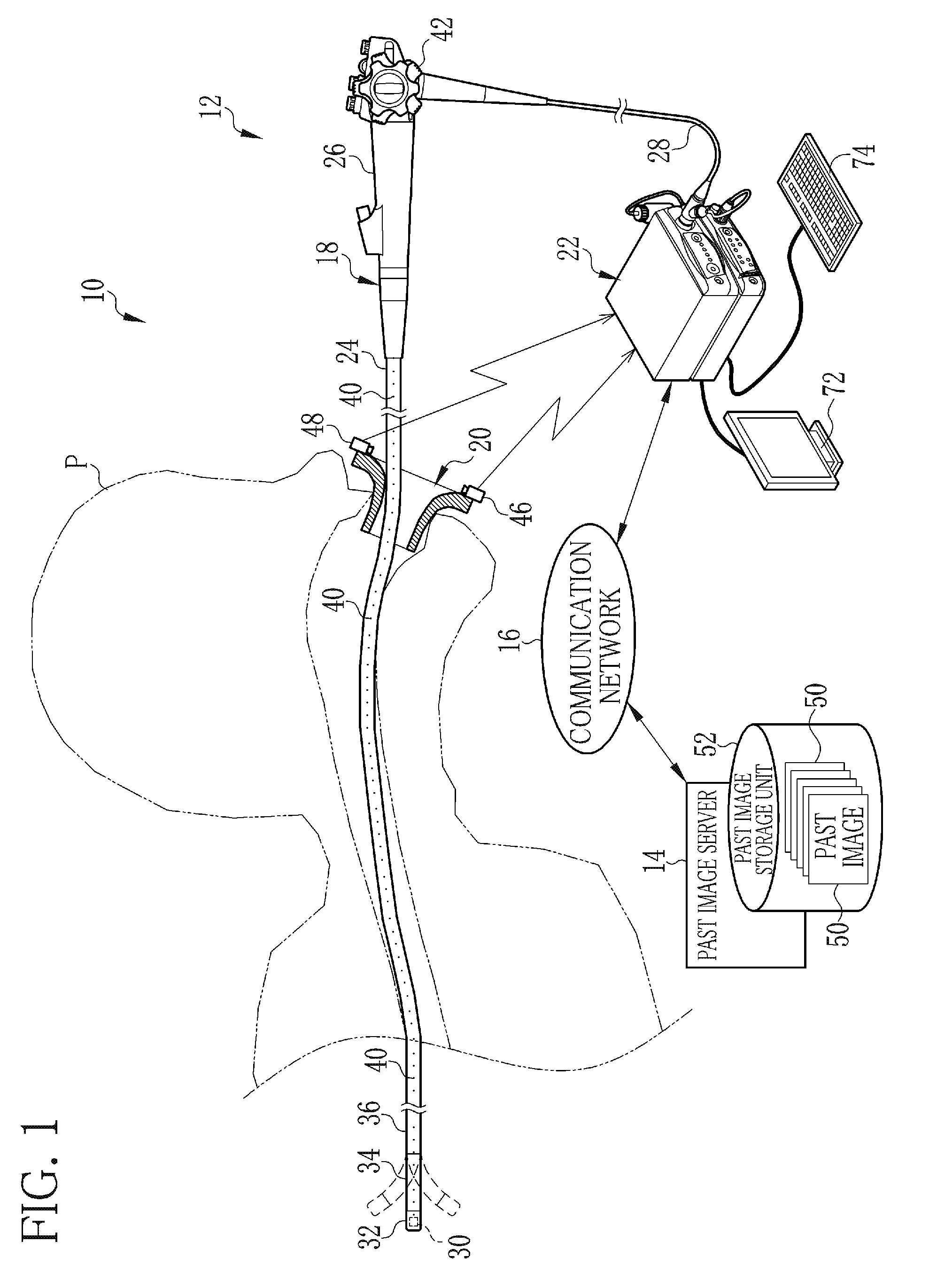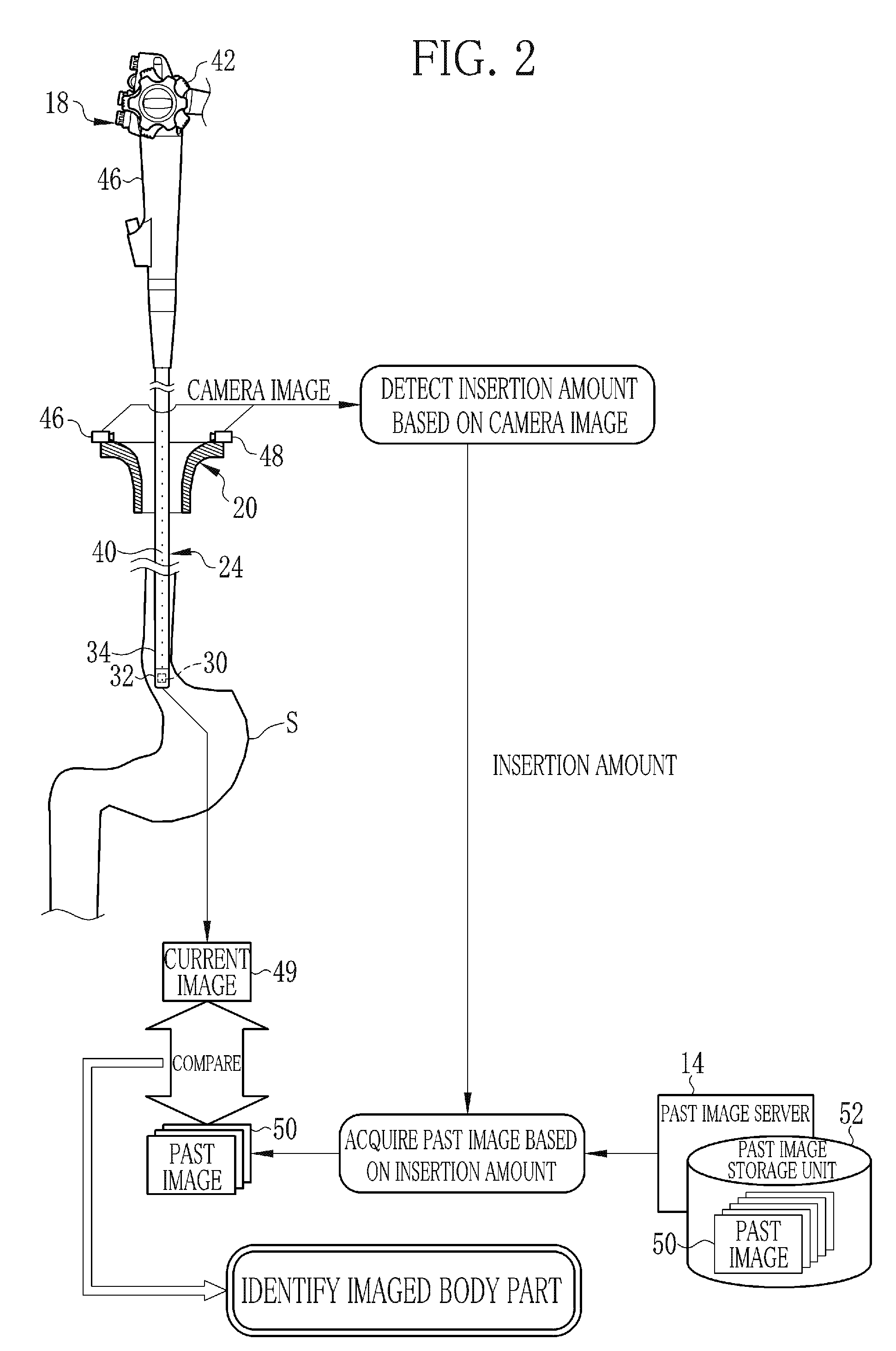Device, method, and non-transitory computer-readable medium for identifying body part imaged by endoscope
- Summary
- Abstract
- Description
- Claims
- Application Information
AI Technical Summary
Benefits of technology
Problems solved by technology
Method used
Image
Examples
first embodiment
[0039]As illustrated in FIG. 1, an endoscope system 10 comprises an endoscope apparatus 12 and a past image server 14, which are interconnected through a communication network 16 such as the Internet or a LAN (Local Area Network). The endoscope apparatus 12 comprises an endoscope 18, a mouthpiece 20, a processor device 22, a display 72, and a keyboard 74. The processor device 22 is an example of a body part identification device.
[0040]The endoscope 18 comprises an insertion section 24, which is to be inserted into a body cavity of a patient, and an operation unit 26 provided at a proximal end of the insertion section 24. the endoscope 18 is connected to the processor device 22 through a cord 28. The insertion section 24 comprises a distal portion 32, a flexible portion 34, and a flexible tube 36. The distal portion 32 incorporates an imaging unit 30. The flexible portion 34 bends to change a direction of the distal portion 32 (that is, an imaging direction of the imaging unit 30). T...
second embodiment
[0099]In the above embodiment, the current image 49 and the past image 50 of the same patient (the same patient of interest) are used for the comparison. Instead, the past image 50 of a patient (another patient) different from the patient of interest may be used to identify the imaged body part.
[0100]The comparison between the current image 49 and the past image 50 of different patients results in similarity lower than that in the comparison between the current image 49 and the past image 50 of the same patient (the same patient of interest) even if the imaged body part is the same. However, in a case where the past image server 14 does not contain the past image 50 of the same patient as in the current image 49, the current image 49 cannot be compared with the past image 50 of the same patient. In this case, it is effective to use the past image 50 of another patient for the comparison with the current image 49 of the patient of interest.
[0101]As illustrated in FIG. 9, it is prefer...
third embodiment
[0102]An example of a third embodiment illustrated in FIG. 10 uses a correspondence table 111, which stores the correspondence between the insertion amounts and the candidates for the imaged body part. In the first embodiment, the insertion amount itself is used as a search condition (search keyword) to retrieve the past image 50. In the third embodiment, first, the past image acquisition unit 92 refers to the correspondence table 111, to determine the candidates for the imaged body part based on the detected insertion amount. The past image acquisition unit 92 designates the candidates for the imaged body part as the search condition, to acquire the past images 50 corresponding to the candidates for the imaged body part from the past image storage unit 52.
[0103]There is a certain correspondence between the insertion amount and the imaged body part. The correspondence table 111 stores the correspondence between the range of the insertion amount and the candidate for the imaged body ...
PUM
 Login to View More
Login to View More Abstract
Description
Claims
Application Information
 Login to View More
Login to View More - R&D
- Intellectual Property
- Life Sciences
- Materials
- Tech Scout
- Unparalleled Data Quality
- Higher Quality Content
- 60% Fewer Hallucinations
Browse by: Latest US Patents, China's latest patents, Technical Efficacy Thesaurus, Application Domain, Technology Topic, Popular Technical Reports.
© 2025 PatSnap. All rights reserved.Legal|Privacy policy|Modern Slavery Act Transparency Statement|Sitemap|About US| Contact US: help@patsnap.com



